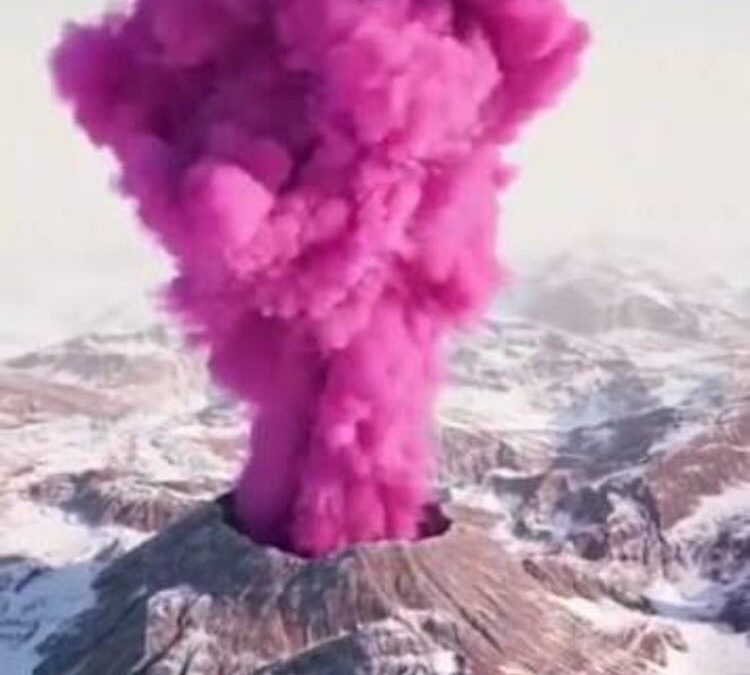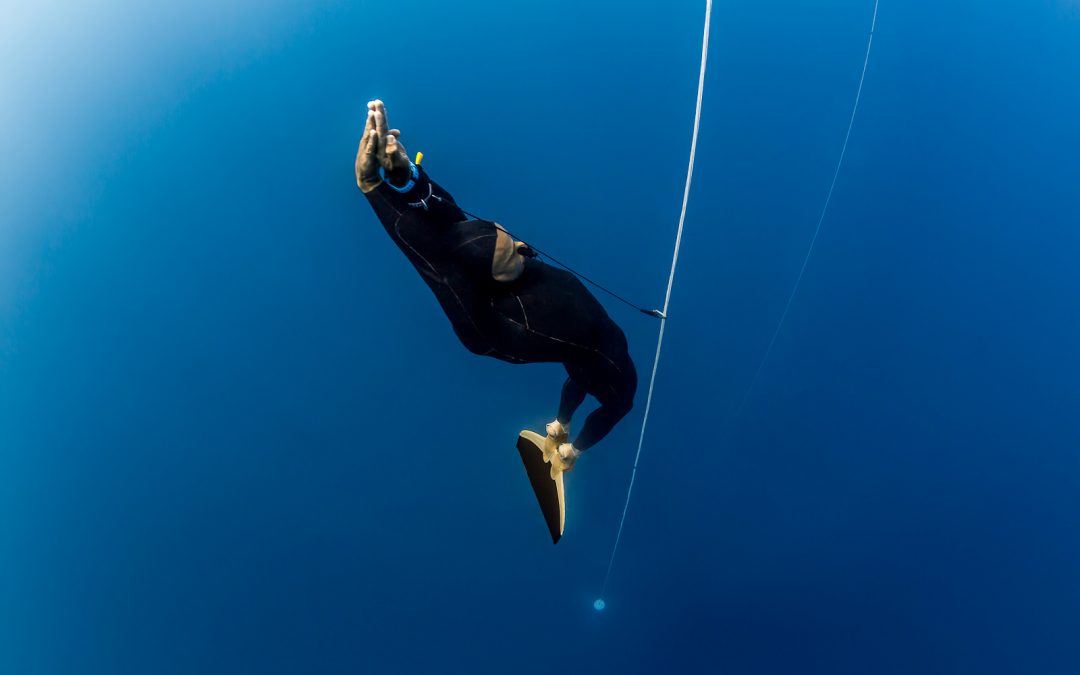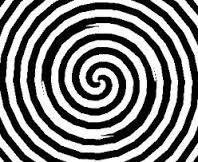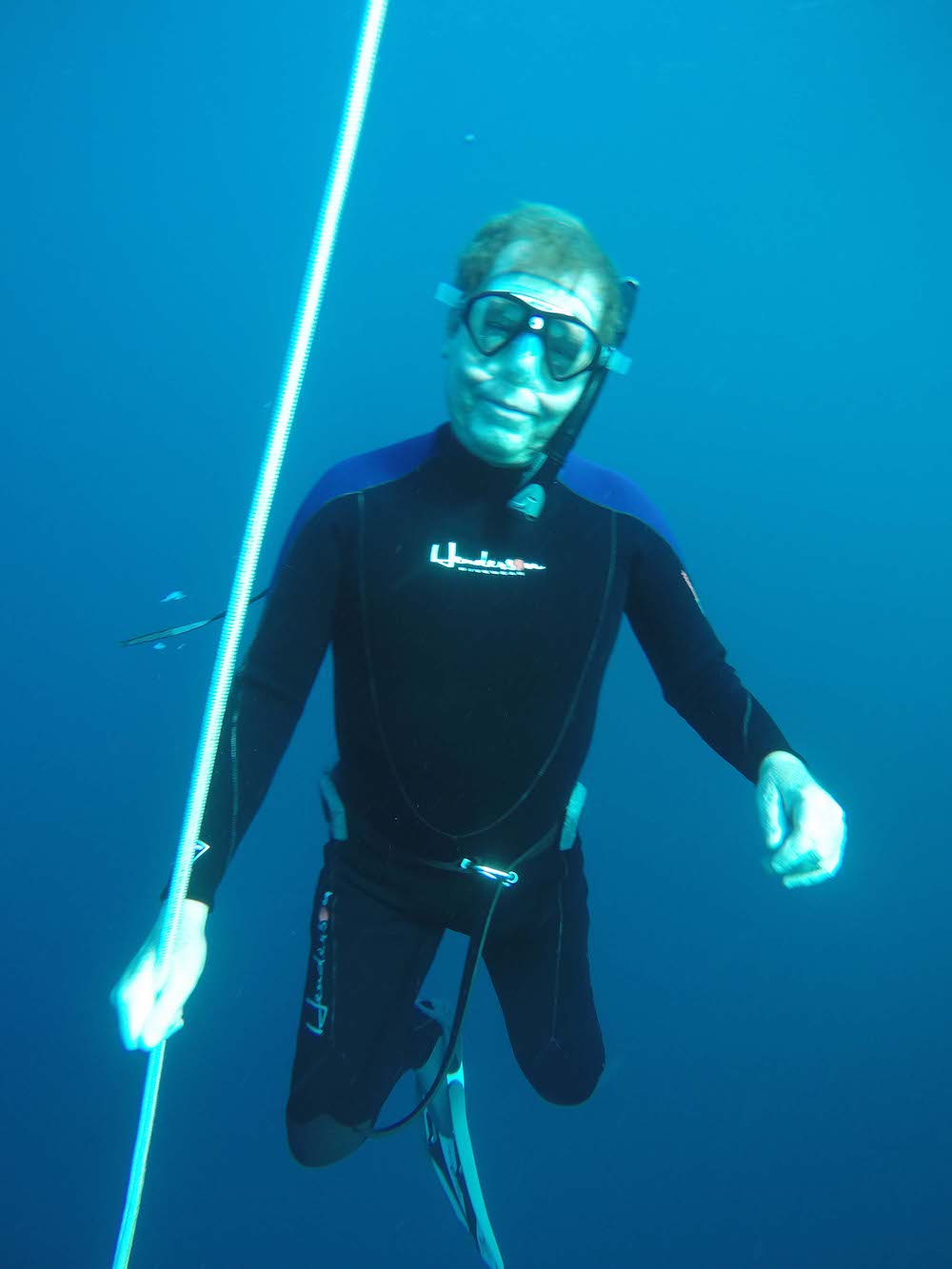
Dec 6, 2017 | Freediving, Yoga
The effects of scaremongering is a mass exodus of tourists from the Amed area, (amongst other areas) and an overall drop in tourist numbers coming to Bali.
Historically, Amed is a very poor area. In recent times it had begun to catch up economically with other areas in Bali. Many locals stopped migrating South and developed their own tourist industry.
This has been mostly financed by credit from banks. If Amed turns into a ghost town, many of these businesses will close with huge loss of livelihood and even the family land (offered as security).
There are reports that some hotels and drivers in other areas of Bali are telling guests that Amed is closed and unsafe. This is untrue.
The local authorities are monitoring the situation and following government guidelines. Amed is in the safe zone and has NOT been evacuated, the roads are not closed to and from Amed, only the evacuated zones are off limits to the public.
Balinese have been displaced from the their homes closer to Gunung Agung and the local communities are doing their best to prepare for the worst and help those in need. Many businesses are closing due to lack of guests but many are open and desperate not to let go of staff, so please correct any disinformation you hear and share this post with anyone with an interest in Amed.
Amed is beautiful, come and check it out, you can get involved with the evacuee camps and help those who are most affected by this powerful natural phenomena. Just by being here you are supporting the local economy which depends now on low impact tourism.

Nov 15, 2017 | Freediving, Yoga
I’m old. I have cancer. I’m a yogi. And I just learned to freedive.
I just threw in the old thing because last night I learned that I’m the oldest person to complete two levels of training at Apneista. But age is just a number, so we’ll let that one go.
Two years ago, almost to the day, I was diagnosed with cancer. In the process of working that up, a second, more dangerous cancer was found. I did a full year of treatment, the usual stuff you, your friends, or your family have endured: surgery, chemotherapy. radiation. Now I’m a year into recovery, and feeling good; appreciating the gift of every day, every moment.
Yoga helped save my life. Even when I was too weak to do asana, the physical practice, I would still do other forms of yoga. Breathing practices, pranayama, helped muster and balance my energy. I set intentions, sankalpas, to guide me on my path. I did yoga nidra, sometimes called yogic sleep, for deep relaxation and rest. Every day my meditation brought me to samadhi, a place where my mind was still, free from the past or future. That carried on into my days. As Alan Watts said, I was able to “Be Here Now”, enjoying every moment no matter the circumstance.
After a year of essentially being house-bound during treatment, I started thinking about mixing things up a bit. My friend Ashley said it was a no-brainer since I loved both the ocean and yoga: come to Bali, specifically come to Amed where she taught freediving at Apneista. I’m a scuba diver since way back and I brought my scuba gear, but Ash offered a chance to sample freediving too. One dive and I never looked back.
The connections between freediving and yoga practices were emphasized during training; I’m very comfortable in the water so it all seemed natural to me, though I had problems equalizing my ears. As I am still recovering from treatment I am mildly anemic. Freediving causes the release of red blood cells as part of the mammalian dive response, and I was feeling great.
The real shift was in my mind. Freediving brought me to the same places that helped me so much with cancer. The shared emphasis on breath was natural. I learned to create an intention for each dive, perhaps to move slowly conserving energy, or maybe just enjoy the view. Relaxation was paramount, and I would sometimes find myself repeating a mantra, moving back into meditation while in the water.
Each dive brought me into the present moment, never mulling over how I could have prevented my illness, or worrying about what may lie ahead for me and my cancer. Underwater I was totally in the present moment, knowing myself, the one pointed mind. I’d look up through the blue water toward the light of the sun, a timeless view. Like meditation, freediving brought me to samadhi.
— Tom —

Apr 1, 2017 | Freediving, Yoga
It’s been a very a long time since we’ve posted a blog, but this freediving workshop really deserves a blog.
It’s something special, a very unique mix of cutting edge apnea research, tailored coaching, freediving focused yoga and meditation, all in beautiful Amed, Bali. This course is aimed at freedivers with an understanding of the basics of Freediving Physiology and Physics, with a desire to deepen and expand perspectives, seeing where the latest research in apnea is taking us.
Frederic Lemaitre will be our guide for most of the daily coaching and freediving workshops. He’s one of the worlds leading experts on freediving science and is at the forefront of apnea research. Frederic is also a top freediving coach, working with the first generation of the 1990s French elite up to today, with the likes of Guillaume Nery.
Each day is a mix of freediving, workshops, yoga and meditation workshops with the focus very much on deepening knowledge and changing perspectives.
DAY 1
The first days stretching will be whole body basic stretching;
Freediving will be focused on safety protocol as developed in his research with AIDA and Free immersion diving
The first days topic will be on advanced freediving physiology where
Frederic Lemaitre will be drawing on the insights gained from over 2
decades as a top apnea researcher. Related to this topic he’ll draw from over 40 different papers published between 2000 and 2017.
The most recent paper was in 2015 comparing the trigeminocardiac reflex
(TCR) with the Mammalian dive response.
Like all the workshops there will be an opportunity to for questions and answers with Frederic.
In the evening there will be a workshop on equalization for freedivers,
focusing on the various techniques available to freedivers, frenzel,
forms of mouthfill etc.
Day 2
In the morning we’ll have some basic stretching and a yoga sequence
designed for freedivers.
The Freediving training will focus on various exercises for
equalization and free immersion diving. The theory workshop will focus on ‘effects of freedive training’ drawing
on research from at least 8 separate papers by Frederic, from the
effects of apnea training on swimming co-ordination to the effects of packing, with a general review on freediving physiology.
The evening session will focus on 2 categories of meditation-
concentration and mindfulness
There will be some theory and some reference to the science behind these
practices, as well an an introduction to one or two practices in each
category.
We’ll also look at how these practices can affect our freediving training.
Day 3
Breathing and stretching
The morning stretching session will focus on the primary and secondary
breathing muscles.
CWT and FI
Principles of freedive training;
This wokshop will focus on training principles and primarily reference three papers, including one that deals with free diver training as a complement to other athletic training.
Meditation workshop- contemplation and creative visualization;
This workshop will investigate 2 other categories of meditation in regards to freediving.
The first will use the power of the rational mind to create break throughs and insight. The visualization practices will focus on harnessing the innate creative power of the mind.
Day 4
Acro- stretching
Freediving risks, blackout, decompression sickness, squeeze.
This is one of the most fascinating workshops as it draws on very interesting new research and introduces solid science based protocols for Decompression sickness, Blackouts and Squeeze. Frederic is one the people writing the guidelines for what is safe in freediving, based on science and not speculation. He is one of the lucky few who has done extensive research with the Ama divers of Japan.
Meditation- this final day will look at slightly more esoteric aspects of meditation, most specifically heart based practices.
Day 5
Stretching- routine
Homo Delphinus- comparative physiology.
A comparison between marine mammals and human mammals.
In this workshop Frederic explores what apnea training and apnea research can tell us about the human being and ways it can be used toimprove our development.
To make this accessible to poor freediving instructors we are offering the full 5 days training and workshops $400
contact info@apneista.com
May 30, 2015 | Yoga
Nowadays, visualisation and mindfulness meditation are not uncommon terms. Even kids have heard of meditation and they know to sit and close eyes with index finger and thumb pressed together. They are both important tools and highly effective if practiced with discipline. Here at Apneista in Amed, Bali, our yoga teacher training program includes learning about methods to discipline our minds through both meditation and visualisation.
Though they two are not synonyms, visualisation and mindfulness meditation are both effective mind training. There are hundreds of different meditation styles and visualisation is just one of them along with affirmations, mantras and chanting.
I used to teach yoga to a group of artists and every time we sat down to meditate, at least one or two students would open up to me after class, rather embarrassed, saying “every time I sit down, I try to clear my mind but all these great ideas would just pop up in my head and I feel such a strong urge to write them all down…”
And that is precisely what can happen if we get confused in various methods of meditation. A tsunami wave of great and not so great ideas, thoughts, emotions rushing into our mind all at the same time. Visualization is an extension of imagination. If we do not cultivate an ability or discipline to steer and clear those waves of thoughts, even the most effective visualization can be just a cover up for another thought and it would only create agitation, anxiety and more destructive, unproductive thoughts that would hinder your performance (if it is being used for freediving) or your well-being.
The reason great ideas just seem to pop up one after another when we sit down to meditate is because we are constant talking machines to ourselves. We have about 50,000 thoughts a day. We rarely sit down, and just BE to watch our breath. And so when we do sit down to meditate, our minds see a little gap of silence and all of a sudden, we can see things very clearly, kind of like that
Limitless pill Bradley Cooper took. Well, not that dramatic but slowly, we have more gaps and pockets of real presence that allows our visualisation to become more precise and effective.
So set aside a time to create a discipline and a habit of sitting down with one pointed awareness. Notice your thought, place your mind on your breath. Best idea ever? Go back to the breath again. Then take a separate time for visualisation. Over time and practice, you will find your visualisation to be much more effective. In future, we will be looking at more visualisation and mindfulness meditation techniques suitable for yoga practitioners and freedivers.
May 21, 2015 | Yoga
The following blog is about practice and the importance of showing up.

I have told this story so many times in yoga teacher training programs, workshops and certainly in a class. Every time someone is late for my class, it reminds me.
I started yoga in an attempt to make friends. I had just moved from Japan to Canada and knew no one. I wanted to fit in. My very new friend talked about going to a yoga class and so I followed her. Eventually, I started going on my own. I really was there for savasana. I was constantly broke and exhausted from working full time and having school full time in order to pay off my already astronomical college tuition fee at an international student rate, which was double the amount Canadian citizens paid at the time. So I was always late for yoga classes. Not just 5 min but about 20min. It’s not something I am proud of and now when I retell this story, people who knew this teacher all say “I can’t believe he let you in the class.”
Perhaps he should have talked to me. Perhaps he should have given me that talk, the “yoga etiquette” talk. But I was too young and absorbed in my own little ego, I am not sure if I would have continued on.
So I just showed up week after week. I can’t remember what he taught about postures or philosophy but I do remember that savasana. It was the peace I had never felt before and sometimes I quietly cried through it. I was not sad. I just suddenly started to “feel” everything.
Many years have passed since then and I have no idea where this teacher is now or what he does. But I am forever thankful for I would not be the same had he not let me come to his classes.
So now, my wish for any yoga students is that they simply show up. “Yoga etiquette” does exist and you can learn them anytime but first, I’d like everyone to forget all that and just show up because it’s the only thing that really matters.
May 21, 2015 | Freediving, Yoga
 Our friend Helena ran a ´Self Hypnosis´ class recently.
Our friend Helena ran a ´Self Hypnosis´ class recently.
After the practice she answered questions about the suitability of the practice for different desired outcomes and environments. An obvious question from one of us was about whether the practice could be utilized in the water for as a tool for freediving training, the answer was “Yes”. Self hypnosis, Helena told us, is not about being put to sleep like the popular image of ´Classical Hypnosis´. Classical Hypnosis only works on some people and the stage hypnotist has a number of assessments to find who in the audience can be influenced. Self hypnosis can be achieved by anyone and the trance state can be induced whenever convenient, and the person is completely awake for the duration. This style is called Modern Hypnosis or Ericksonian Hypnosis after Milton Erickson.
Helena is a GP and has used these techniques to help patients. She explained that in daily life we generate beta-waves (β-waves) that are very fast and notice a lot of the data around us but don’t retain it. In the trance state on which she focuses we generate alpha-waves (α-waves). These are slower and remember everything. Things done while in an alpha state are better remembered. Another form used by practitioners is the deeper trance of theta waves (θ-waves). For treating a trauma that it is not beneficial to remember the practitioner can help the patient into this deep trance. The practitioner can speak to the patient and discover a cause of trauma or a solution to a problem. Once out of the trance the patient will not remember the episode, hence not reinforcing the problem, and the solution can begin to work.
We are interested in being awake and accessing valuable resources J
Here’s the procedure:
1) Ask for a resource. (You have to really want it) And give a time frame (i.e. 2mins)
2) Pick a visual point 45° above normal line of sight.
3) Relax! (legs, back, neck and jaw and tongue)
4) Looking softly in your 45° direction acknowledge what you can see, near and far, say to yourself 5 things. Things from your direct vision and from your peripheral. Then say 5 things you can hear; loud, soft, bodily and external. Then say 5 things you can feel; temperature, discomfort, clothing, breadth.
*While you say these things your voice must be of a lower register and slower than normal*
5) Starting with 5 sights, 5 sounds, 5 sensations Then, 4 sights, 4 sounds, 4 sensations Then, 3 sights, 3 sounds, 3 sensations Then, 2 sights, 2 sounds, 2 sensations Then, 1 sight, 1 sound, 1 sensation.
By the end you will allow your eyes to close and allow the trance state to function. If the eyes close before the end of the cycle all well and good, then continue using whatever slight colours or spots of light as reference.
If the complete round of sights, sounds, sensations isn’t enough go through the cycle again. With experience the practitioner can succumb to the trance earlier, perhaps even before the first line of sights, sounds, sensations!
Deepening Techniques:
After the practice Helena showed us some deepening techniques. If, for example, you were guiding a friend through it you could count slowly down from 10 to 1 (counting up has the effect of awakening or energising). If you wanted to deepen your own trance you could observe your palm from a medium distance. As you very slowly bring the palm towards the face continue to focus softly on the lines, contours, colours, shadows, taking everything in. When the palm reaches the face and touches softly you can allow yourself into the trance.
Please let us know how you get on with this training, one of possible many supplementary tools for freediving training.
—
www.apneista.com









